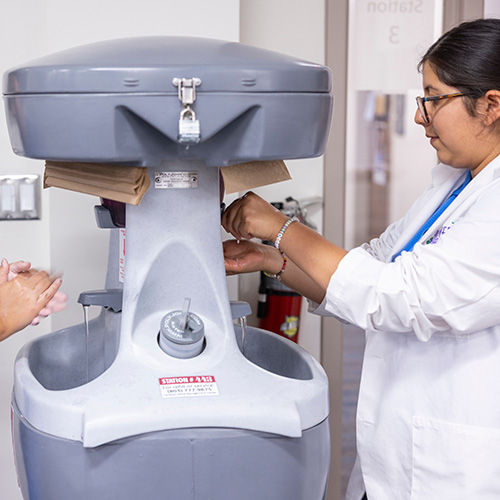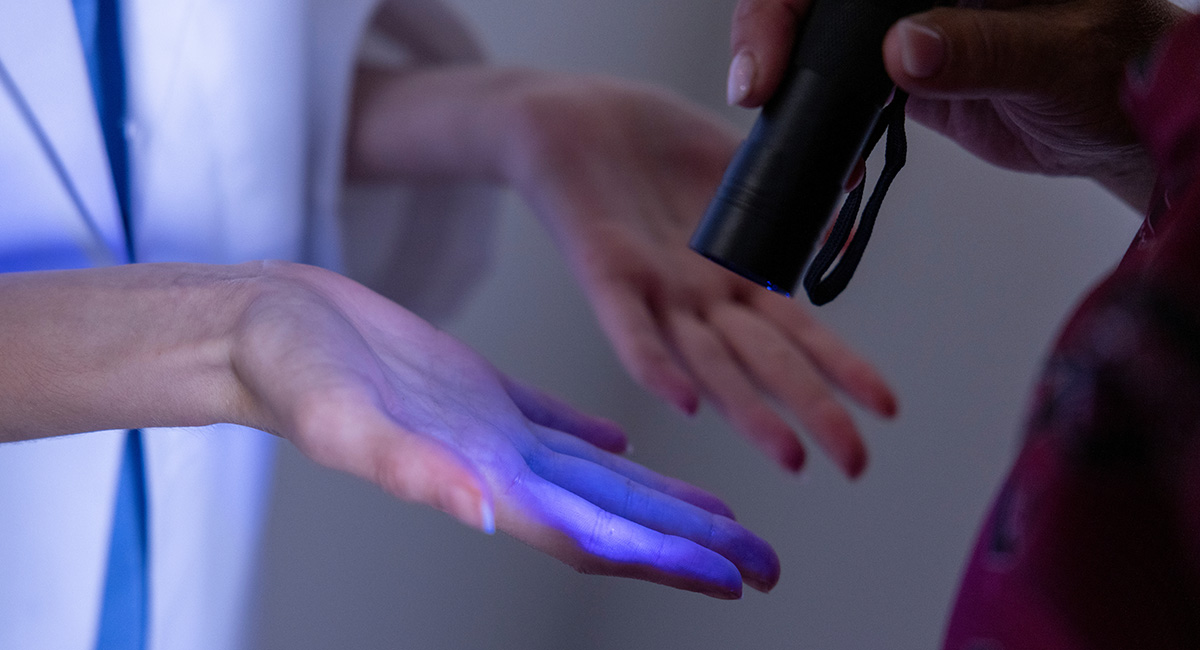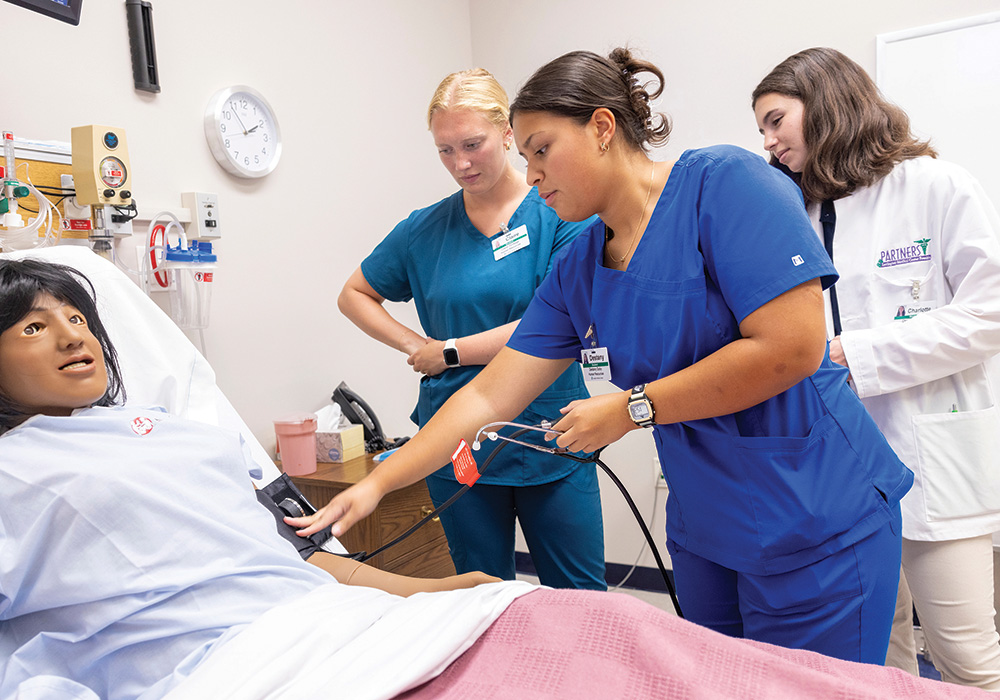Nearly 70 rising high school seniors from across the Midlands invested part of their summer vacation toward gaining in-depth insights into health science careers thanks to a partnership of the College of Nursing, the School of Medicine Columbia and Lexington Medical Center.
These Lexington and Richland county students applied for the Lexington Medical Center High School Partners Program by demonstrating a sincere interest in health care fields and working in hospital settings, knowing it would mean missing downtime at the beach or being able to sleep in late.
Over a pair of three-week sessions in June and July, groups of more than 30 students rotated through clinical areas in the College of Nursing and School of Medicine Columbia. They learned many aspects of nursing, as well as roles that included surgical technology, radiography and physical therapy.
“The Partners Program is very hands-on and very educational,” says Janelle Martinez-Garcia of Lexington High. “They make sure you shadow a variety of techs, nurses and doctors, and they get to take you in on procedures.
“Honestly, I would recommend the Partners Program to anyone who's looking forward to going into the medical field.”
The curriculum is an example of innovative approaches to address South Carolina’s shortage of health care workers.
Health institutions know there’s a need to foster early interest in these essential career fields, and the Partners Program drew interest from the region’s geographical diversity of rural and urban areas. Students hailed from high schools that included Blythewood, Dreher, Gilbert, Lexington, Richland Northeast, River Bluff and Spring Hill.
“Lexington Medical Center hopes the Partners Program inspires students to be passionate about careers in health care,” Lexington Medical Center workforce coordinator Marquita Gaines says. “One day when they finish their education, maybe they can return to Lexington Medical Center to take care of people in the Midlands for generations to come.”

Starting with interactive morning workshops, students were exposed to day-to-day hospital operations. From administration to patient support roles, the students gathered a holistic view of how real-world medical professionals work together.
Field trips included a tour of the School of Medicine Columbia Ultrasound Institute, where students oohed and ahhed as they watched a demonstration of the ultrasound simulator before they got to practice with the technology themselves.
The three weeks culminated with a visit to the College of Nursing’s Center for Simulation and Experiential Learning (SAEL). The students met with faculty and staff who led demonstrations in four styles of simulation suites.
The students first gathered in a main classroom where a wall was adorned with a word cloud containing dozens of inspirational descriptions of the college’s mission. Among the standout words were “Compassionate,” “Healing,” “Integrity” and “Transformative.”
Also greeting the students were a variety of “manikins.” These were high-tech human-shaped machines who could blink their eyes and breathe and had artificial vital signs to monitor.
The afternoon’s intensive itinerary included being divided into groups that rotated between stations that focused on lifesaving skills, patient monitoring, pre- and postnatal care and hygiene, along with bedside emotional support. The students took turns:
• Assessing vital signs on a manikin, such as pulse locations and diagnosing sounds from the heart, lungs and bowel
• Demonstrating CPR protocol, where a manikin in a hospital bed could be attempted to be revived
• Attempting their handwashing techniques, where students were invited to see how thoroughly they could scrub with germ-fighting gel. An ultraviolet flashlight in a darkened room was where they tested how well they removed contaminants between fingers and underneath their nails.
• Monitoring a birthing station, where a mother manikin was administered an epidural to deliver a manikin bundle of joy

The nursing faculty were impressed with the students’ knowledge and enthusiasm.
As student after student at the CPR station proficiently and with little instruction climbed on the hospital bed to perform the correct chest compressions, Pipeline Faculty Fellow Sarah Clement remarked, “I don’t think I’ve had a group do this right, right off the bat.”
The session ended with students asking questions of the College of Nursing instructors. Beyond the typical college application process, students wanted to know how USC nursing students would receive training in the future. They were enticed with descriptions of the new facilities scheduled to be ready in 2024 that will double the STEM-teaching space.
Aniya Wilson of Blythewood High says her biggest surprise of the program was “getting to deliver a baby, because it's really fun. It made me interested in possibly doing labor and delivery. I definitely want to work with something that has to do with children.
“This has been an amazing experience. It's made me happy and made me sure that I want to be in health care, and I want to do something to help people.”
